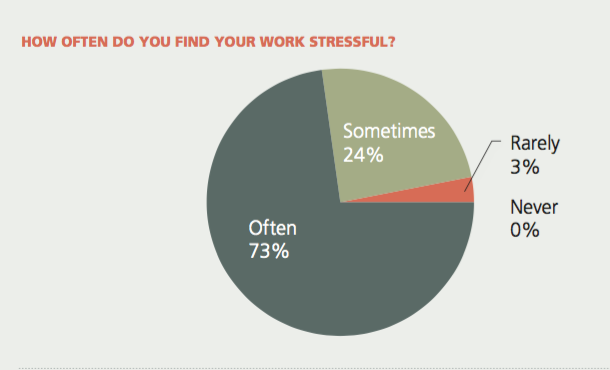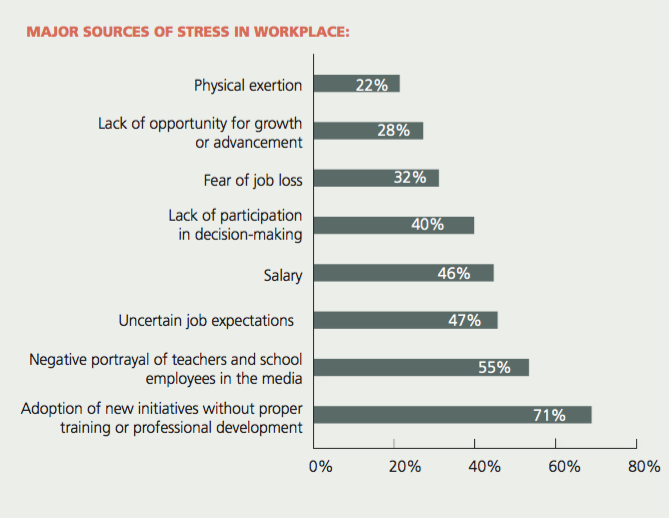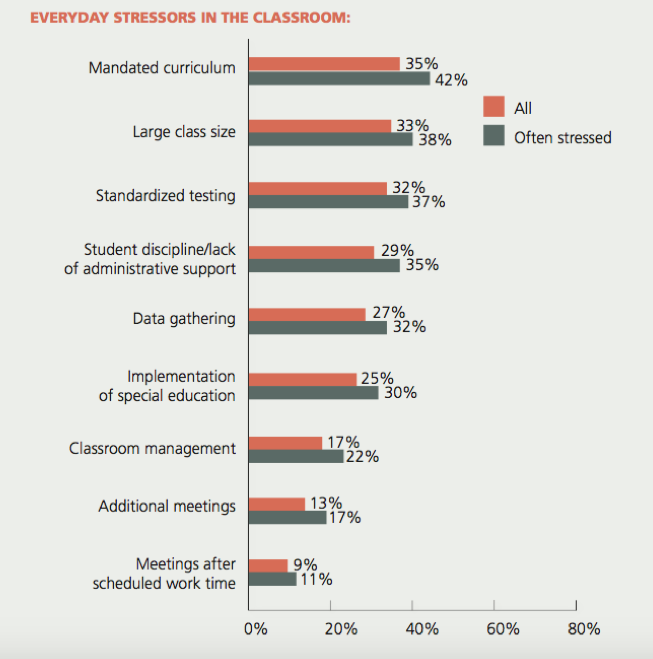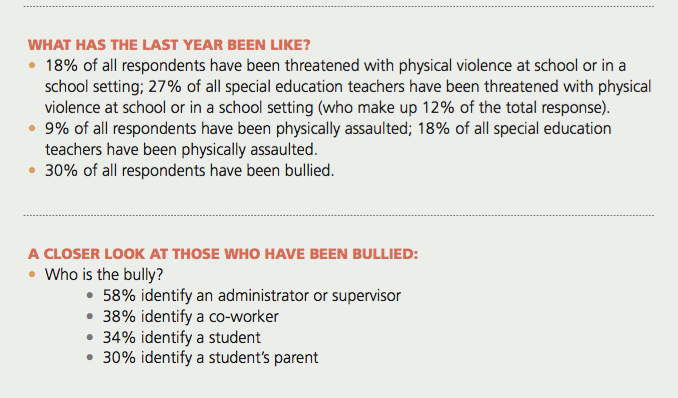
It happened in Georgia yesterday.
A beloved social studies teacher locked himself in his classroom while his students stood outside the door.
When the principal came with the key, the teacher fired a handgun through an exterior window.
Students ran, one even twisting her ankle in the escape.
Thankfully, no one else appears to have been injured.
However, the incident brings into focus a vital component of the gun debate.
Teachers are already under tremendous stress.
Arming them won’t stop gun violence. All it does is add another potential shooter.
It’s only been about two weeks since a shooting at Stonemason Douglas High School in Florida left 17 dead.
That’s at least 19 school shootings so far in 2018 – and it’s only the beginning of March!
In that time, the national media and the Trump administration have focused on one specific solution to stopping such violence from happening again: giving teachers guns.
The latest incident in Georgia underlines why this is such a terrible idea.
Teachers are not super heroes.
Take it from me. I’m an almost 15 year veteran of the middle school classroom in western Pennsylvania.
We’re just human beings.
My colleagues and I have all the same human failings and weaknesses as everybody else.
We get tired and overworked and put upon and stressed and sometimes…
…Sometimes we don’t handle it well.
I know some people don’t want to hear it.
Society has piled all kinds of responsibilities and unreasonable expectations on our shoulders.
We’re no longer allowed to be just educators.
We’re parents, counselors, disciplinarians, doctors, psychologists, lawyers, nutritionists…. The list goes on-and-on.
And now politicians actually want us to add law enforcement to the job description?
We’re already under colossal pressure, and some folks want to add a gun to that situation?
That’s lighting a fuse.
But don’t just take my word for it.
Back in 2015, tens of thousands of educators filled out the Quality of Worklife Survey conducted by the American Federation of Teachers and the Badass Teachers Association.
After responses from 91,000 school employees and 31,000 who completed the entire 80-question survey, a picture of the emotional landscape became clear.
A total 73% of respondents said they often feel stressed at work.

The reasons? Adoption of new initiatives without proper training or professional development (71%), negative portrayal of teachers and school employees in the media (55%), uncertain job expectations (47%) and salary (46%) were the most common responses.

The survey identified the following as most common everyday stressors in the workplace – time pressures, disciplinary issues and even a lack of opportunity to use the bathroom.

Focusing just on the classroom, top stressors were mandated curriculum, large class sizes and standardized testing.

Many teachers claimed to be the victims of violence at school.
A total 18% of all respondents said they had been threatened with physical violence – though the percentage jumped to 27% when looking solely at special education teachers.
A total of 9% of all respondents claimed to have been physically assaulted at school. Again the percentage jumped to 18% of all special education teachers.
But it’s not just physical assault.
A total of 30% claim to have been bullied by administrators (58%), co-workers (38%), students (34%) and student’s parents (30%).

This is the situation where policymakers want to throw firearms.
Most gun violence doesn’t involve a shooter doing harm to others. The great majority of gun deaths are self-inflicted.
Even without adding guns to the mix, several high profile teachers and administrators already have committed suicide.
In October of 2010, for example, a California elementary school teacher named Rigoberto Ruelas, Jr. took his own life after the Los Angeles Times published a report labeling him a “less effective teacher.” Despite the fact that students and parents praised Ruelas, who taught in one of poorest schools in his district and who also was born, raised and continued to live in area where his school was located, the Times targeted him among other so-called “less effective” teachers as part of a major propaganda campaign.
And this isn’t an isolated incident. In July of 2015, a New York City principal under investigation for altering Common Core test scores, killed herself by jumping in front of a subway car.
Adding guns to this situation will just mean more teachers taking their own lives with a bullet.
That may have been the intent of the Georgia teacher in yesterday’s shooting.
Local police said they didn’t think he was trying to injure anyone else. When he shot his gun out of the window, he appeared to be trying to get others to leave him alone.
Arming teachers is a terrible solution to school violence. It’s taking an already stifling room and turning up the heat.
We need sensible gun regulations to reduce the pressure, not increase it.
We need sensible school policies that treat teachers and students like human beings and not just cogs in the system.
But this requires us to break out of a dangerous pattern in how we deal with social problems.
When we see a problem, we generally just shrug and leave it up to public schools and teachers to solve.
Inadequate resources – leave it to teachers to buy school supplies out of pocket.
Inequitable funding – increase class size and leave it to teachers to somehow make up the difference.
We can’t do the same with gun violence. We can’t just toss teachers a gun and tell them to sort it out.
Teachers can’t solve all of society’s problems alone.
That’s going to take all of us.
And we’ll need more than disingenuous proposals like answering gun violence with more guns.

Let’s call out some of the names who are responsible for all of those stressed out teachers.
Their names are Charles and David Koch, and every member of the Koch brothers’ ALEC organization, Betsy DeVos (She belongs to ALEC) Bill Gates, David Coleman, the Wal-Mart Walton family, et al (there are hundreds of names that could be listed here).
There is a war taking place to dismantle the progressive US and its public institutions and replace it with a theocratic corporate kleptocracy. There has been a war of words for decades that continues to single out public school teachers and their labor unions. When I was still teaching, back in the 80s or 90s, I heard a GOP senator blame public school teachers for the size of America’s prison population that has been the highest in the world since Republican President Nixon declared war on recreational drugs like marijuana while most Americans could legally enjoy another recreational drug that is worse than marijuana, alcohol.
As for that stress, it results in high rates of PTSD.
Teresa McIntyre, a psychology research professor at the University of Houston said, “Teachers don’t have one or two traumatic events; it’s a chronic daily stress that accumulates over days and months and years. It’s pretty equivalent in other high-risk occupations.”
In a pilot study conducted of 50 teachers in four Houston-area middle schools, Ms. McIntyre found as many as one in three teachers in the Houston district were “significantly stressed,” with symptoms ranging from concentration problems, fatigue and sleep problems.
If one in three teachers have PTSD symptoms, that means 33% compared to the national average of 7.8%.
I wrote about the stress on teachers here: https://crazynormaltheclassroomexpose.com/tag/teachers-and-ptsd/
What are the symptoms of PTSD?
For many people, symptoms begin almost right away after the trauma happens. For others, the symptoms may not begin or may not become a problem until years later. Symptoms of PTSD may include:
Repeatedly thinking about the trauma. You may find that thoughts about the trauma come to mind even when you don’t want them to. You might also have nightmares or flashbacks about the trauma or may become upset when something reminds you of the event.
Being constantly alert or on guard. You may be easily startled or angered, irritable or anxious and preoccupied with staying safe. You may also find it hard to concentrate or sleep or have physical problems, like constipation, diarrhea, rapid breathing, muscle tension or rapid heart rate.
Avoiding reminders of the trauma. You may not want to talk about the event or be around people or places that remind you of the event. You also may feel emotionally numb, detached from friends and family, and lose interest in activities.
These are other symptoms of PTSD:
Panic attacks: a feeling of intense fear, with shortness of breath, dizziness, sweating, nausea and racing heart.
Physical symptoms: chronic pain, headaches, stomach pain, diarrhea, tightness or burning in the chest, muscle cramps or low back pain.
Feelings of mistrust: losing trust in others and thinking the world is a dangerous place.
Problems in daily living: having problems functioning in your job, at school, or in social situations.
Substance abuse: using drugs or alcohol to cope with the emotional pain.
Relationship problems: having problems with intimacy, or feeling detached from your family and friends.
Depression: persistent sad, anxious or empty mood; loss of interest in once-enjoyed activities; feelings of guilt and shame; or hopelessness about the future. Other symptoms of depression may also develop.
Suicidal thoughts: thoughts about taking one’s own life.
http://www.mentalhealthamerica.net/conditions/post-traumatic-stress-disorder
LikeLiked by 2 people
Reblogged this on David R. Taylor-Thoughts on Education.
LikeLike
[…] are plenty of people who have chimed in on this ridiculousness in a much more poignant manner than I could, but I do want to raise one point. Teachers are […]
LikeLike
[…] Pundits caution that video games will desensitize children and make them more prone to aggression and acting out. It might even contribute to the creation of school shooters. […]
LikeLike
[…] Teachers touting guns, shooting it out with armed terrorists – no. That’s not what a school should be, either. […]
LikeLike
[…] And keep in mind, both teachers and test makers are being paid with public tax dollars. YOU are funding the test makers on-the-job massage break just as you’re funding the public school teachers trip to the doctor for anti-anxiety meds. […]
LikeLike
[…] However, arming teachers or even adding more armed police to the school will not make our classrooms more sec…. […]
LikeLike
[…] I wasn’t then going back to class and talking over with my teacher how we can best barricade the room against any would-be bad guys. […]
LikeLike
[…] But research consistently shows that increasing the number of guns in schools increases the likelihood that students will get hold of the… […]
LikeLike
[…] felt like they had moderate to high control over basic decisions within their own classrooms, but their level of influence and control dropped significantly on policy decisions that directly impact… – such as setting discipline policy, performance standards and deciding how resources are […]
LikeLike